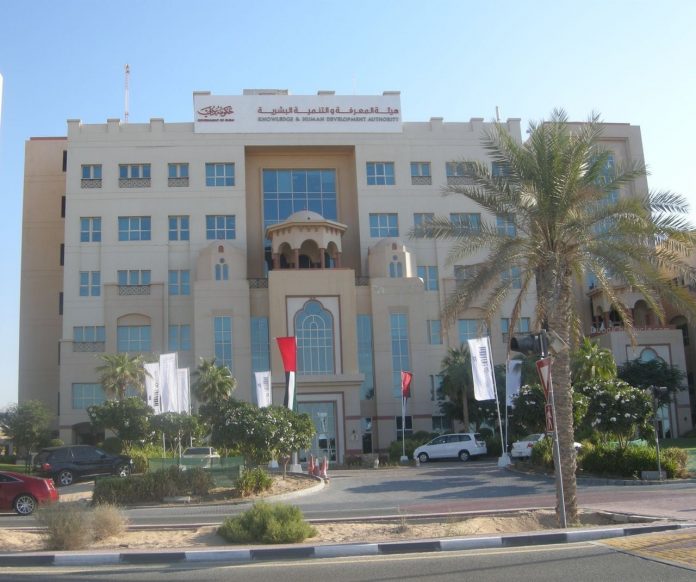
The number of school and university students in Dubai has increased in the past year by 8.3 percent. Ten new private schools opened in the city for the 2013/2014 academic year, adding room for 23,000 students and the total revenue of private schools reached AEd 4.7 billion, according to official statistics. Meanwhile, the performance of Dubai students worsened and still remains far bellow average, according to the latest PISA exams.
New report, released Tuesday by the Knowledge and Human Development Authority, reveals that the school and higher education sector is growing in Dubai, with an 8.3 percent increase in the number of students enrolled in private schools during the 2013/2014 academic year. Ten newly opened private schools added another 23,000 seats, in response to the increasing demand. The number of student will continue to go up in the next several years. By 2020, according to Dr. Abdulla Al Karam, Director General of KHDA, Dubai should provide 360,000 school places. Here, it is important to note that KHDA, which is the private school regulator in the emirate, focuses primarily on attracting new investors to the education sector.
Most of school students (32.2%) study in British curriculum schools, followed by 31 percent who attend Indian schools. The American schools are less attractive (18.8%), but IB, French, and UAE Ministry of Education schools are at the bottom. British curriculum schools are the most expensive and tuition fees are higher than in the United Kingdom.
9.4 percent more students are enrolled in universities, compared to the previous year. Totally, 10,563 students graduated from high education institutions in Dubai, which is an increase of 15.6 percent from the previous academic year. The report, titled “Dubai Private Education Landscape 2013-2014” also reveals that number one choice for students remains business-related sciences. 22,890 (44%) of all 52,586 students who attend higher education institutions in Dubai, are studying business. This, according to the researchers, reflects the business environment in the city and the good climate, offering various business and career opportunities to the young people. Natural and physical sciences are the least attractive fields of study, with only 226 students (0.4%), and tourism and hospitality, although a growing sector in the city, is also at the bottom of the list, with 1% of the students. 2 percent of them are studying education and only 3 percent – medicine.
Overall, there are 26 international university branches in the city educating 39 percent of all students, 25 local universities (41%), 3 vocational institutes (2%), and 3 federal universities (18%). Nearly half of all students are Emiratis (43.2%, or 22,694), the second most enrolled group is Indians with 16%, followed by Arab students who are 14% of all student population. The difference in the numbers of men and women isn’t significant – 56 percent of the students are male and 44 percent are female. 37,540, or over 70 percent, of all students study in pursuit of bachelor degrees, while only 1 percent are studying for their doctorates.
The report also says that private schools in the city earned AED 4.7 billion from tuition fees only in 2013/2014 academic year. Education is a big business in Dubai. The annual fees range from AED 1,725 to AED 110,000 for the most prestigious schools. While 42 percent of the children or their parents of course, pay less than AED 10,000 per year, 19 percent pay more than AED 35,000. The question is, with the low academic performance of students and the considered low quality of education, provided by even expensive, prestigious schools, are such fees worth it?






















![The Square at Nad Al Sheba Gardens Now Open hope tax season treated you well! Just checking in—ready to refocus on growing your business? I remember how we discussed scaling your [specific aspect of their business, e.g., online presence] but paused due to time constraints. We now offer a streamlined 6-month plan that delivers real results without adding to your workload. Let me know if you'd like to chat—I’d love to help you pick up where we left off!](https://www.dubaichronicle.com/wp-content/uploads/2024/11/The-Square-5-218x150.jpg)









